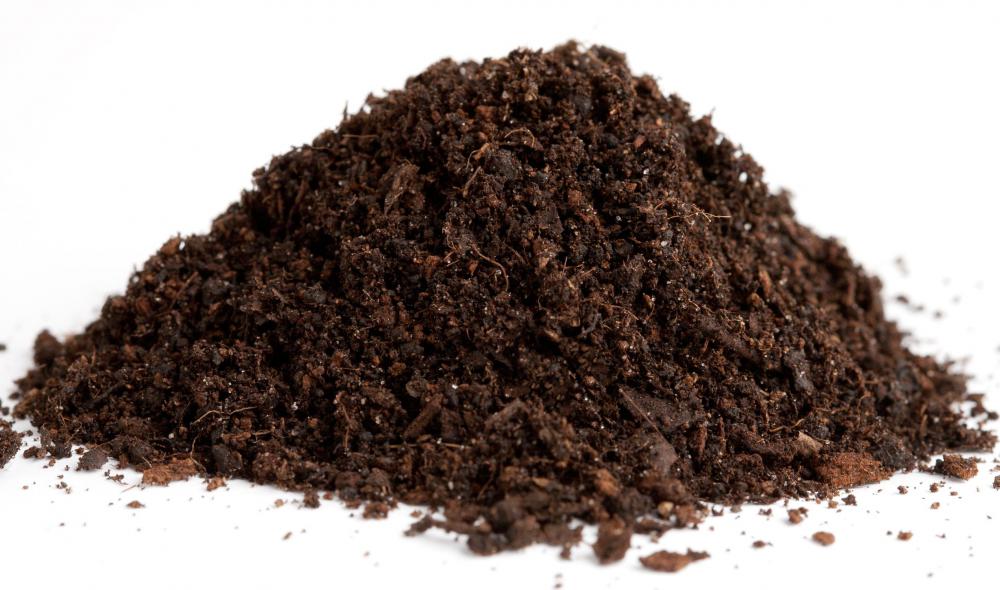At WiseGEEK, we're committed to delivering accurate, trustworthy information. Our expert-authored content is rigorously fact-checked and sourced from credible authorities. Discover how we uphold the highest standards in providing you with reliable knowledge.
What is Composting?
Composting speeds the natural process whereby microorganisms break down complex organic matter into simple, nutritious topsoil. When this occurs on the forest floor, it's called mulching, but when people have a hand in the procedure, we call it composting. Composting requires water, air, and rotting material with a good nitrogen to carbon ratio.
Composting starts with the proper equipment. A container needs to be durable, with slots for air circulation, compartments for different ingredients, and a cover to keep out rain and snow. Some people like to mount their compost bin on an axle so they can rotate it and mix everything together. Containers should be kept on level ground away from sources of contamination, like pets or garbage.

Turning some trash into useful fertilizer requires careful sorting of all the ingredients. The ratios of certain materials, like grass clippings versus banana skins, need to be monitored to make sure the batch of compost decomposes well. Things that seem like they will disintegrate probably will, including vegetable peelings, seed hulls, fruit rinds, beans, wilted lettuce, etc. Avoid anything that seems like it would rot, like dairy, meat, or oil.

With a good supply of rich vegetable waste, compost still needs other additives for bacteria to turn rough materials into topsoil. For example, scraps from your kitchen and grass clippings have a lot of nitrogen. You'll also want some carbon to regulate the speed of decomposition, so add hay, bark, wood chips, or dry leaves.
The compost will radiate heat if it contains a good ratio of carbon to nitrogen while it cures. A subtle, emanating warmth means that worms, fungi, and bacteria are working hard. When the majority of decomposition has taken place and the compost is ready to be spread on a garden or lawn, the compost will feel cool.

Create ideal conditions for speedy composting by monitoring air and moisture levels. Too much dense vegetation will make compost compact. Microorganisms need air, too, and if they suffocate they are no longer creating precious material. Fluff it up with hay or dry leaves, add vents, or merely mix it with a shovel. There should be enough moisture such that the mixture looks damp, but no water drips from the bottom.

The resultant soil material from composting is called humus. It's a very valuable, nutritious kind of topsoil that replenishes the dirt. Humus is appropriate to spread over vegetable gardens, lawns, around trees, fields, and anywhere you want something to grow. Composted fertilizer makes up for nutrients lost due to crops, vivacious weeds, or other vegetation that sapped minerals and vitamins from the soil.
AS FEATURED ON:
AS FEATURED ON:














Discussion Comments
I have been attempting to use shredded leaves to make compost but have been unsuccessful. I basically use almost 100% leave, and they do break down but here is my issue. I get lots on small, thin, white colored roots growing throughout the pile. So much so that a pitch fork alone can not turn the pile without a great effort. The roots are so inter-tangled that the pile breaks off in root bound chucks.
My composting bins are square containers that have wire mesh on three sides, with wooden slates in the front. The top is open and exposed to the elements and the bottom is the ground surface. I do not line the bottom surface with anything; I just pour the leaves into the bin. The bins are located in a mostly shady are but since the pile does get warm on the inside and the leaves do break down into a form of dirt, I figured that the lack of adequate sun is not an issue.
Is it necessary to create a barrier between the composting material and the ground, something of a good biodegradable material, such as newspaper? Is my lack of Nitrogen in my mulch allowing the growth on these roots? Is it necessary for a mostly sunny area to get proper mulching? Thanks!
Post your comments